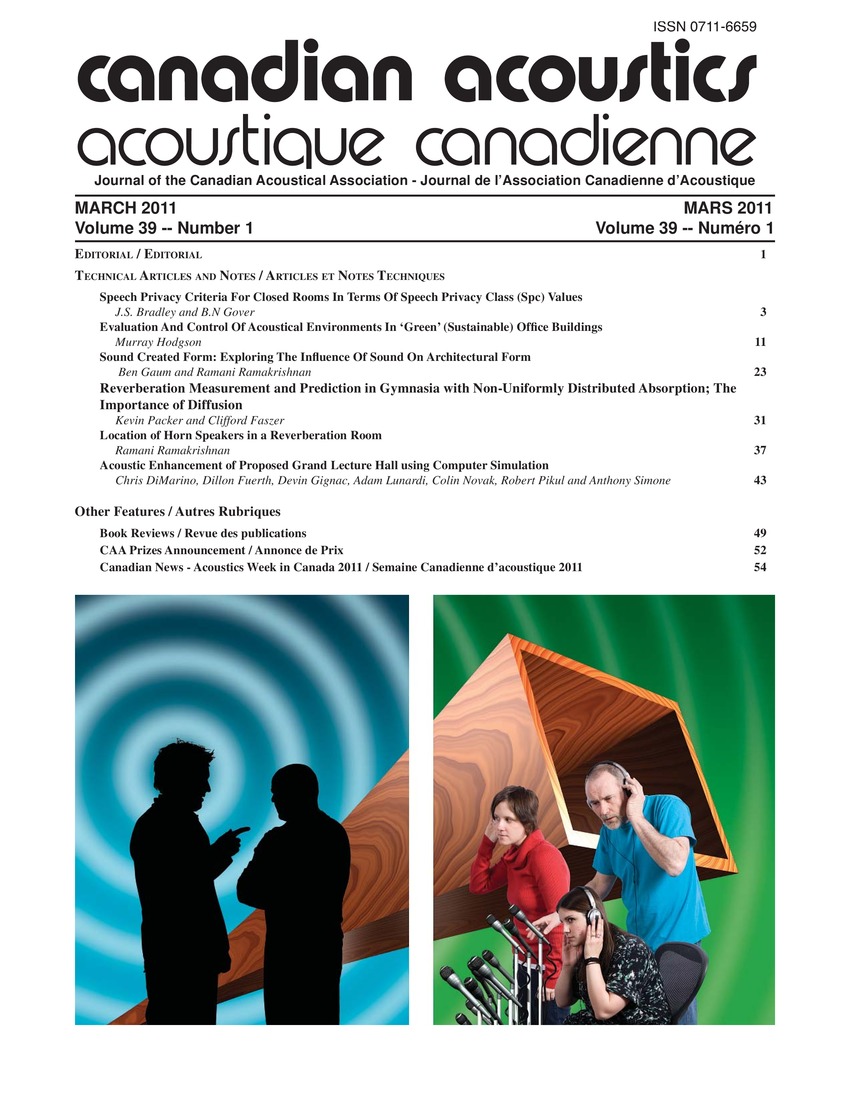Evaluation and control of acoustical environments in 'green' (sustainable) office buildings
Keywords:
Acoustic noise, Acoustics laboratories, Architectural acoustics, Design, Office buildings, Surveys, Acoustical design, Acoustical evaluation, Acoustical measurements, Building acoustics, Control measures, Engineering controls, Measurement evaluations, Noise isolation, Post treatment, Pre-TreatmentAbstract
This paper discusses the increasing important issue of the acoustical design of 'green' (sustainable) buildings. Many 'green' buildings have unsatisfactory acoustical environments, according to their occupants. Work done at UBC to evaluate acoustical quality in 'green' office buildings and improve it by engineering control measures is reviewed. The problem of 'green'-building acoustics is introduced and its importance discussed. Details of the acoustical evaluation of six 'green' office buildings by occupantsatisfaction surveys and acoustical measurements are presented, and their implications for the design of 'green' buildings considered. A detailed study of one naturally-ventilated 'green' building is discussed. Pretreatment survey and measurement evaluation results are presented. It is concluded that inadequate noise isolation due to natural-ventilation openings is a big problem. The design and post-treatment evaluation of noise-control measures to improve the noise isolation in two situations is discussed. Finally, other 'green'building acoustical issues are noted, and conclusions are drawn as to where future work should be directed.Additional Files
Published
How to Cite
Issue
Section
License
Author Licensing Addendum
This Licensing Addendum ("Addendum") is entered into between the undersigned Author(s) and Canadian Acoustics journal published by the Canadian Acoustical Association (hereinafter referred to as the "Publisher"). The Author(s) and the Publisher agree as follows:
-
Retained Rights: The Author(s) retain(s) the following rights:
- The right to reproduce, distribute, and publicly display the Work on the Author's personal website or the website of the Author's institution.
- The right to use the Work in the Author's teaching activities and presentations.
- The right to include the Work in a compilation for the Author's personal use, not for sale.
-
Grant of License: The Author(s) grant(s) to the Publisher a worldwide exclusive license to publish, reproduce, distribute, and display the Work in Canadian Acoustics and any other formats and media deemed appropriate by the Publisher.
-
Attribution: The Publisher agrees to include proper attribution to the Author(s) in all publications and reproductions of the Work.
-
No Conflict: This Addendum is intended to be in harmony with, and not in conflict with, the terms and conditions of the original agreement entered into between the Author(s) and the Publisher.
-
Copyright Clause: Copyright on articles is held by the Author(s). The corresponding Author has the right to grant on behalf of all Authors and does grant on behalf of all Authors, a worldwide exclusive license to the Publisher and its licensees in perpetuity, in all forms, formats, and media (whether known now or created in the future), including but not limited to the rights to publish, reproduce, distribute, display, store, translate, create adaptations, reprints, include within collections, and create summaries, extracts, and/or abstracts of the Contribution.


